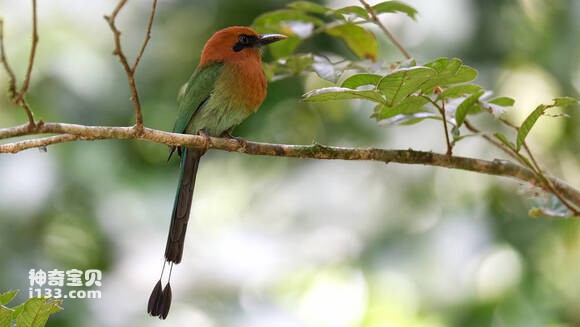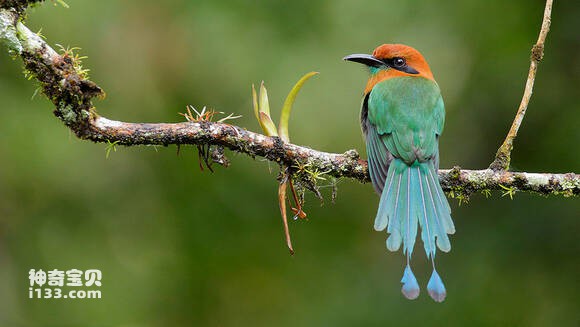Electron platyrhynchum
IUCN
LCBasic Information
Scientific classification
- name:Electron platyrhynchum
- Scientific Name:Electron platyrhynchum,Broad-billed Motmot
- Outline:Climbing birds
- Family:
Vital signs
- length:No textual research information is available
- Weight:No textual research information is available
- lifetime:No textual research information is available
Feature
Distribution and Habitat
It is found in Bolivia, Brazil, Colombia, Costa Rica, Ecuador, Guatemala, Honduras, Nicaragua, Panama, and Peru.
Inhabits open environments such as forest edges and jungles.
Appearance
Broad mouth Tsui d «¡ is small and medium The beak is long, broad and slightly curved, with serrated margins. The bases of the two toes facing forward are partially healed. The tail is long, the central tail feathers are long, and there is a section of the tail shaft near the end, causing the end to form independent small feathers, forming a racquet shape, which is its distinctive feature. Wings short round; Most of the body feathers are bright green, blue and brown; Sex is different.
Details
The scientific name Electron platyrhynchum, foreign name Broad-billed Motmot, specific habits
It feeds on, and sometimes eats, insects, worms, lizards, various invertebrates and small vertebrates When waiting for prey, it can calm down for a long time, and once it finds prey, it will suddenly pounce. The tail often swings from side to side or leans on a perch. Dig holes in the cliff bank at the water's edge or dig holes in the sand with a curved mouth for the nest, produce 3 to 4 white eggs, both sexes hatch and brood.
Listed on the International Union for Conservation of Nature (IUCN) 2012 Red List of Threatened Species ver 3.1 - Low Risk (LC).
Protect wild animals and eliminate wild meat.
Maintaining ecological balance is everyone's responsibility!








